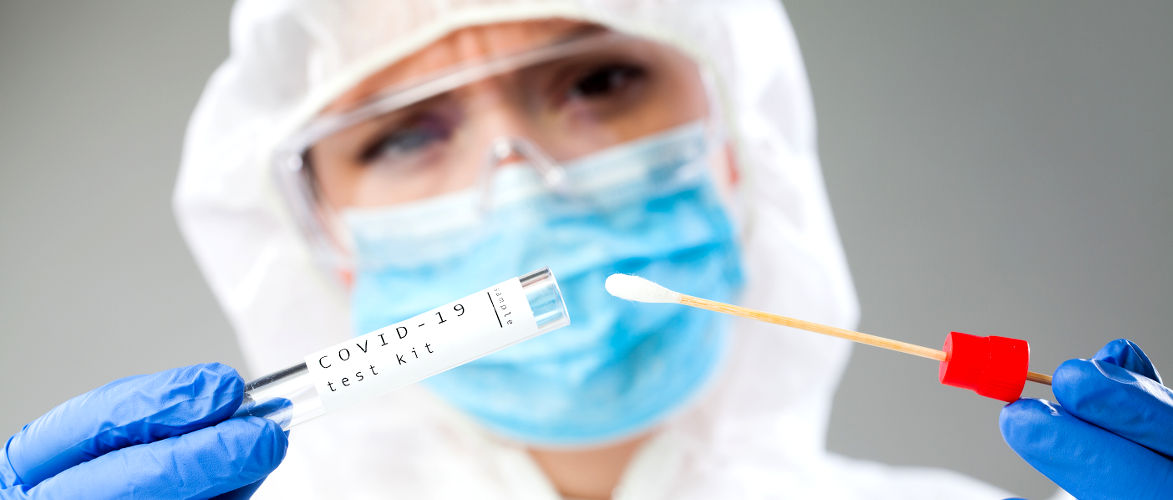Spiegel’s “fact checkers” swear their readers to the pure doctrine of the reliability of PCR tests.
By Walter van Rossum.
Anyone who is not so careful with the truth must compensate for this by acting confidently, by constantly repeating untruths and half-truths and by systematically defaming dissenting opinions. We know this game, of course we know it from the flagship of the media propaganda fleet regarding the corona virus: the Spiegel. A new article by Holger Dambeck, head of the health department, tries once again to do massive PR for the PCR test. The only problem is that the basic assumption is wrong: the claim that the test can detect “infections with the SARS-CoV-2 virus”.
But it was finally time for clarity to be restored about the PCR test, whose quality was questioned by shady figures like Dr. Wolfgang Wodarg. Holger Dambeck, head of the science department at Spiegel magazine, has taken the matter into his own hands.
He opens his expertise like this:
(translation)
“Infections with the SARS-CoV-2 virus are detected with so-called PCR tests, which search for the pathogen’s gene sequences. Individual physicians and also corona skeptics repeatedly question the quality of these tests. One accusation is that the test also works with other corona viruses, which is why mass false positive results distort the picture.”
The first sentence is fundamentally wrong: PCR tests do not detect infectious viruses, but only certain nucleic acid genomes, but no infections. A health authority like the American FDA declares unequivocally, “positive results … do not rule out bacterial infection or co-infection with other viruses. The agent detected may not be the definite cause of disease”. The CDC (Centers for Disease Control and Prevention – an agency of the U.S. Department of Health and Human Services), the Swiss Federal Office of Public Health and many others explicitly state this.
The first sentence is fundamentally wrong: PCR tests do not detect infectious viruses, but only certain nucleic acid genomes, but no infections. A health authority like the American FDA declares unequivocally, “positive results … do not rule out bacterial infection or co-infection with other viruses. The agent detected may not be the definite cause of disease”. The CDC (Centers for Disease Control and Prevention – a U.S. Department of Health and Human Services agency), the Swiss Federal Office of Public Health, and many others explicitly state this.
Many manufacturers of such tests clearly emphasize: Not suitable for diagnostic purposes. On the instructions for use of the PCR test of the German company creative diagnostics it is stated in the first place that their test is also effective against other viruses, including “Influenza A Virus (H1N1), Influenza B Virus (Yamagata), Respiratory Syncytial Virus (type B), Respiratory Adenovirus (type 3, type 7), Parainfluenza Virus (type 2), Mycoplasma Pneumoniae, Chlamydia Pneumoniae”.
In between, it should be noted that a word like “corona skeptic” alone says everything about the prevailing pandemic journalism.
Dambeck then devotes himself to the devilish theses of the physician Wolfgang Wodarg:
(translation)
“The number of cases has only increased in the past few weeks because many more people have been tested.”
“The more tests, the more false positive results,” explains Wodarg. However, Wodarg did not invent this, but these figures are from a round robin test conducted by Instand – Gesellschaft zur Förderung der Qualitätssicherung in medizinischen Laboratorien e.V. An interlaboratory test is a:
(translation)
“method of external quality assurance for measurement procedures and measurement and testing laboratories. Basically, identical samples are tested with identical methods or with different methods. The comparison of the results allows statements to be made about the measurement accuracy in general or about the measurement quality of the participating institutes”.
However, this is not about the validation of the test itself, but about the accuracy of execution. This round robin test was commissioned by the Robert Koch Institute. The virological institute of the Charité under the direction of Christian Drosten supported the execution of the test with all means.
On May 2, 2020 Instand published an interim result based on the evaluation of 112 laboratories. An update was made at the beginning of June on the basis of over 400 participating laboratories. The results are almost identical. The values determined indicate that the tests showed false positive results between 1.4 and 2.2 percent. Out of 100 tested, almost 2 are identified as “infected”, although they are not. By the way, not all positives were correctly identified in this interlaboratory test either. Not only because Wodarg refers to these numbers, they must be wrong, but because Holger Dambeck is now beginning to do his own calculations.
(translation)
“According to the weekly test statistics of the RKI, only 2,992 of a total of 510,551 tests were positive in the 28th calendar week, i.e. from July 6 to 12. This corresponds to 0.59 percent. It is therefore clear that the false-positive rate in Germany can by no means exceed 0.59 percent. Because even if there was not a single infected person among the 510,551 people tested in the 28th calendar week, only 2,992 tests turned out positive – that is 0.59 percent. Wodarg and Instand are thus clearly refuted.
Peter Bauer, Professor of Genomics at the University of Tübingen, also confirms:
(translation)
“A few laboratories that did not work optimally would have a strong influence on the statistical result of the approximately 400 participating laboratories as outliers”.
How does Bauer know this? Precisely the results of such laboratories, or where obvious allocation errors could be proven, were not taken into account in the overall calculation according to Instand’s protocol. Finally, the experiment also involved the certification of the participating laboratories.
In reality, some of the test kits did not respond 100% to any of the seven samples to be analyzed. This does not mean, however, that you simply take a few kits out of the race and then everything is right again. Most of these tools have different quality for different tasks. The RKI has not withdrawn the approval of any of the tools as a result of the results. We may conclude from this that Professor Bauer never paid much attention to the protocols of the experiment – but Spiegel has received information that his readers can easily swallow.
It is admirable how Holger Dambeck in no time at all disproves not only Wodarg and the complex and elaborate interlaboratory test by Instand, but the grandmaster of the PCR test itself: Professor Christian Drosten. He had admitted early on that his test is not for large-scale use, but only provides reasonably reliable information in suspicious cases. That is why he rejects larger samples.
(translation)
“We cannot do that simply because laboratory procedures also produce false positive results”.
There would be many explanations for Dambeck’s calculation model. But Dambeck is not interested in them. There is only one concern that drives him: if the results of the interlaboratory test were not correct, “the statistics of the Robert Koch Institute would be useless”. However, they are not correct for quite different reasons: they equate positive test results with proven infections, count “convalescents” as symptomatically ill, and cumulatively add deaths with a positive test as deaths from Covid-19.
On the other hand, Der Spiegel likes to celebrate the allegedly new “infection figures”, but regularly forgets to relate these figures to the immense expansion of testing. Seen in this light, Dambeck’s statements suddenly become counterevidence: if only 0.59 percent of over 500,000 tests turn out to be “positive”, while in the 14 calendar week, for example, 9.01 percent of all those tested were positive, then this says it all about the clinically completely unfounded chatter of the second wave. And then there remains the really important question that Dambeck & Co. never ask: How many of those who tested positive are really clearly symptomatically ill and would therefore be infectious? That would be the gold standard for the PCR test.
The scandalous thing about such texts like the one from the Spiegel is somewhere else – apart from the unforgivable nonsense that a PCR test diagnoses infections. How is it possible that a test or a test model on which global fate is made dependent, was never validated prior to its approval and that no attempt has been made to do so in recent months?
The result of Instand’s round robin test confirms damn good laboratory work. But should Dambeck really have missed the fact that there are several studies that prove devastating inaccuracies in the test – you can even read about them in the Deutsches Ärzteblatt or the British Medical Journal. In a study published online as a preprint in the British Medical Journal, the authors go beyond playing with estimated numbers. In a systematic review of more than 12,000 originally negative test subjects, they discovered a dramatic error rate:
“Conclusions: There is a substantial and largely unexplained heterogeneity in the proportion of false-negative RT-PCR results. The collected evidence has several limitations, including risk of bias issues, high heterogeneity, and concerns about its applicability. Nevertheless, our findings reinforce the need for repeated testing in patients with suspicion of SARS-CoV-2 infection given that up to 54 percent of COVID-19 patients may have an initial false-negative RT-PCR (certainty of evidence: very low)”.
The fact that there are hundreds of reports that people have tested positive or negative every few days cannot have escaped even to the Spiegel.
It is widely known that there are problems with the PCR test for a variety of reasons – of which there are a few hundred models in circulation worldwide – and it would not be so bad if you knew how to deal with them and interpret the results correctly. But presumably, journalists like Holger Dambeck are only interested in keeping their pandemic fetish, the dashboard with the nicely arranged categories “infected” – “convalesced” – “deceased”, free of all disintegrating doubt, because this is the basis of their apocalyptic message.
Sources and remarks:
- https://www.spiegel.de/wissenschaft/medizin/coronavirus-faktencheck-wie-zuverlaessig-ist-der-pcr-test-a-57224ed0-8c87-42b1-9016-223b165d980b
- Food and Drug Administration
- https://www.fda.gov/media/136151/download
- https://www.creative-diagnostics.com/sars-cov-2-coronavirus-multiplex-rt-qpcr-kit-277854-457.htm
- https://en.wikipedia.org/wiki/Round_robin_test
- https://www.instand-ev.de/System/rv-files/340%20DE%20SARS-CoV-2%20Genom%20April%202020%2020200502j.pdf
- https://www.instand-ev.de/System/rv-files/340%20DE%20SARS-CoV-2%20Genom%20April%202020%2020200502j.pdf
- https://www.aerzteblatt.de/archiv/214370/PCR-Tests-auf-SARS-CoV-2-Ergebnisse-richtig-interpretieren
- https://www.bmj.com/content/369/bmj.m1808
- Arevalo-Rodriguez I, Buitrago-Garcia D, Simancas-Racines D, et al. False-negative results of initial RT-PCR assays for covid-19: a systematic review. medRxiv 20066787. 2020 doi:10.1101/2020.04.16.20066787%
+++
Note on the Rubikon article: The following text first appeared in “Rubikon – Magazin für die kritische Masse”, on whose advisory board Daniele Ganser and Rainer Mausfeld are active, among others. Since the publication was done under a free license (Creative Commons), KenFM takes over this text for secondary use and explicitly points out that the Rubicon also depends on donations and needs support. We need many alternative media!
+++
This article first appeared in “Rubikon – Magazin für die kritische Masse“
+++
Thanks to the author for the right to publish.
+++
Image source: Cryptographer / shutterstock
+++
KenFM strives for a broad spectrum of opinions. Opinion articles and guest contributions do not have to reflect the views of the editorial staff.
+++
KenFM now also available as a free app for Android and iOS devices! Via our homepage you can visit the stores of Apple and Google. Here is the link: https://kenfm.de/kenfm-app/
+++
Support us with a subscription: https://www.patreon.com/KenFMde
+++
You like our program? Information about further support possibilities here: https://kenfm.de/support/kenfm-unterstuetzen/
+++
Now you can also support us with Bitcoins.

BitCoin address: 18FpEnH1Dh83GXXGpRNqSoW5TL1z1PZgZK










Kommentare (0)